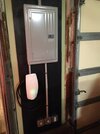ATPMSD
Active Member
Unfortunately, this is almost useless owing to the number of postings by people where the electrician did not understand what was needed. It is best if you learn what you need before calling an electrician.Tesla does list certified electricians



